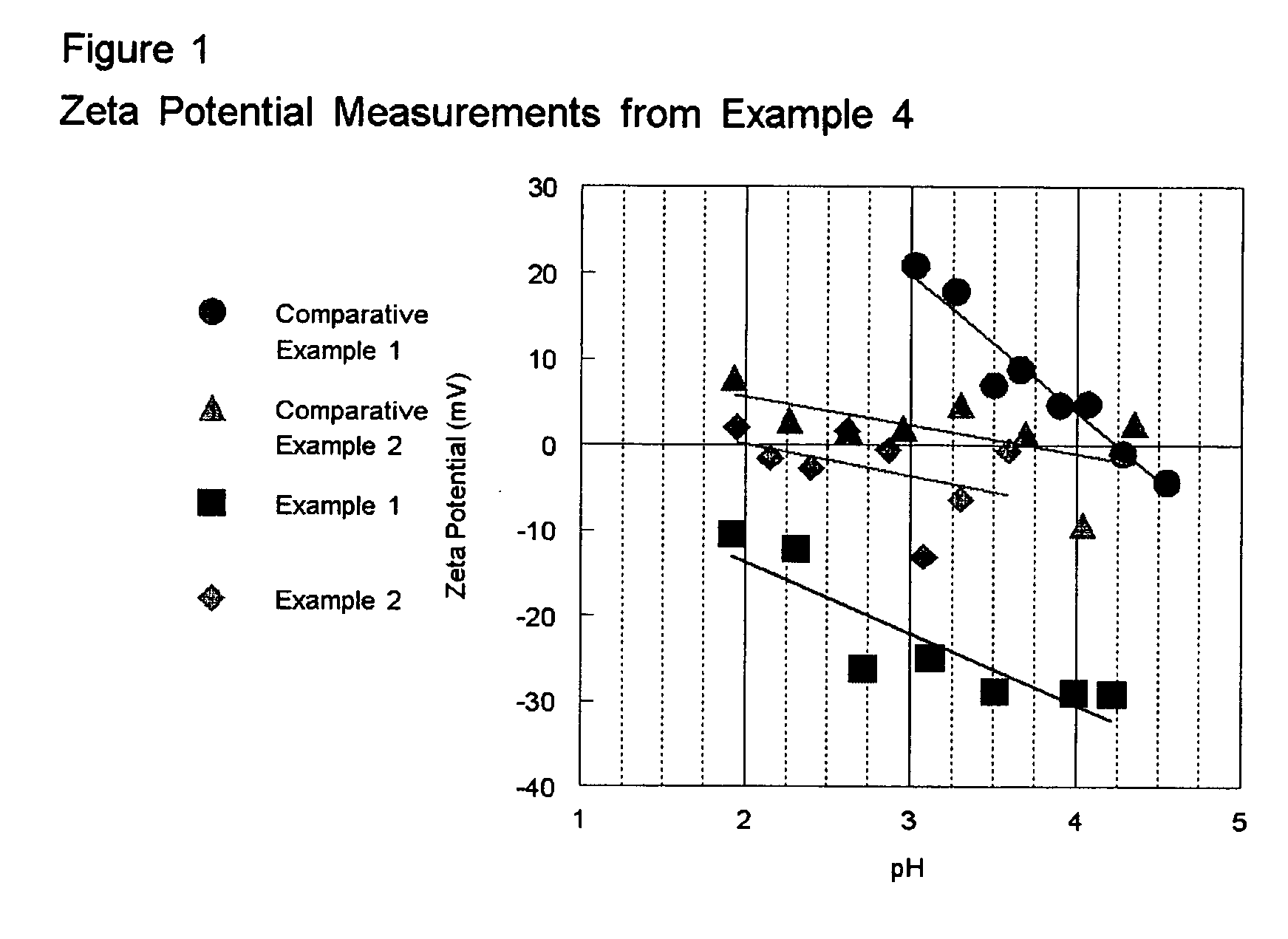High activity titania supported metal oxide DeNOx catalysts
a technology of metal oxide denox and high activity, which is applied in the direction of metal/metal-oxide/metal-hydroxide catalysts, physical/chemical process catalysts, separation processes, etc., can solve the problems of limited capacity, insufficient optimization of methods, and disadvantages of titania
- Summary
- Abstract
- Description
- Claims
- Application Information
AI Technical Summary
Benefits of technology
Problems solved by technology
Method used
Image
Examples
example 1
Reducing pH Prior to Addition of APT to Manipulate Isoelectric Point
[0049] 75 g of anatase TiO2 containing no tungsten oxide (Trade name DT51 from Millennium Inorganic Chemicals, Inc.) is slurried in 175 ml deionized water. Concentrated sulfuric acid is added until the pH of the slurry reaches 0. A separate solution of ammonium paratungstate (APT) was prepared by dissolving 9.38 g in 150 ml deionized water at 50° C. The APT solution is added to the TiO2 slurry and allowed to mix for 1 hr. The powder is then filtered, dried at 110° C. over night and calcined at 500° C. for 6 hrs. The amount of tungsten added was sufficient to achieve a 10 wt. % loading of WO3. Vanadium oxide is added to this sample in the same manner as that described in Comparative Example 1. The results of activity testing are shown in Table 1.
example 2
Reducing pH After Addition of APT, but Prior to Depositing of APT on Titania
[0050] In order to show that the order of the process is important, the point in the method where the pH is dropped and the APT is added is reversed from Example 1. The following method is used: 75 g of DT51 is slurried in 175 ml deionized water. A separate solution of ammonium paratungstate (APT) was prepared by dissolving 9.38 g in 150 ml deionized water at 50° C. The APT solution is added to the TiO2 slurry, and then concentrated sulfuric acid is added until the pH of the slurry reaches 0. The powder is then filtered, dried at 110° C. over night and calcined at 500° C. for 6 hrs. The amount of tungsten added was sufficient to achieve a 10 wt. % loading of WO3. Vanadium oxide is added to this sample in the same manner as that described in Comparative Example 1. The results of activity testing are shown in Table 1. As the results in Table 1 show as measured by the k*tau parameter, products made accordingly...
example 3
Reducing pH to 2
[0051] The 10 wt. % WO3 on TiO2 sample was prepared in the same manner as that described in Example 1 with the exception that the pH is lowered to 2 with the addition of concentrated sulfuric acid. Vanadium oxide is added to this sample in the same manner as that described in Comparative Example 1. The results of activity testing are shown in Table 1.
PUM
| Property | Measurement | Unit |
|---|---|---|
| pH | aaaaa | aaaaa |
| temperature | aaaaa | aaaaa |
| pH | aaaaa | aaaaa |
Abstract
Description
Claims
Application Information
 Login to View More
Login to View More - R&D
- Intellectual Property
- Life Sciences
- Materials
- Tech Scout
- Unparalleled Data Quality
- Higher Quality Content
- 60% Fewer Hallucinations
Browse by: Latest US Patents, China's latest patents, Technical Efficacy Thesaurus, Application Domain, Technology Topic, Popular Technical Reports.
© 2025 PatSnap. All rights reserved.Legal|Privacy policy|Modern Slavery Act Transparency Statement|Sitemap|About US| Contact US: help@patsnap.com

